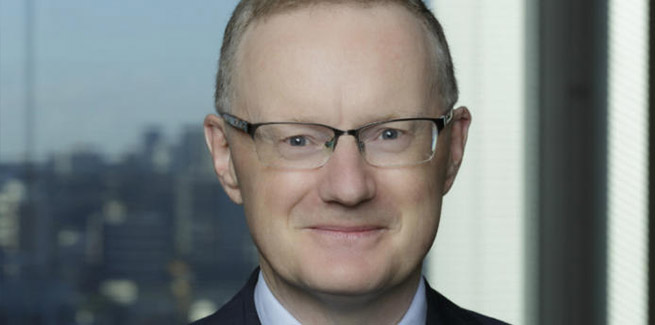The Reserve Bank of Australia (RBA) has previously indicated that it has been monitoring both the housing and mortgage markets, working with APRA to collect data on the banks and talking directly to the financial institutions.
RBA governor Philip Lowe reaffirmed the stance when declaring the August cash rate decision last week, stating it is “important that lending standards are maintained”.
But speaking to the House of Representatives standing committee on economics on Friday, Dr Lowe stated he is yet to see any signs of deterioration in lending standards.
“We’re not in a situation we were in last decade, where almost half the loans in the country were being made without $1 of principal having to be repaid on a regular basis – these were the interest-only loans. And you’ll recall last decade, there have been very dramatic boosting in lending standards for investors,” Dr Lowe said.
“So, we’re not seeing that. And we’re not seeing the interest-only loans. And we’re not seeing underwriting standards weaken.”
The RBA has signalled that it would take action alongside APRA, if it deemed lending growth too strong, with a high rate of debt-to-income growth.
While Dr Lowe was reluctant to set benchmarks for intervention, he commented it would be necessary if credit growth picked up materially from where it currently is.
“Let’s say we’re talking double-digit credit growth sustained for a period of time and income growth was running at 4 or 5 per cent, that would be problematic, in my view,” he said.
“At some point, APRA would be considering interventions.”
At meetings of the Council of Financial Regulators, APRA and the RBA have considered tools such as raising the minimum interest rate that banks use for home loans – which would squeeze how much they could lend to individuals.
Dr Lowe also mentioned potential portfolio loan-to-value restriction or debt-to-income restrictions.
“We’re not at the point that those restrictions are needed, but I couldn’t rule out that point emerging within the next year. Time will tell,” Dr Lowe said.
Meanwhile, New Zealand’s central bank will soon begin consulting on ways to tighten mortgage lending standards, amid concerns around a rise in risky lending.
We can’t control house prices, Lowe says
Dr Lowe refuted claims from Labor MP Andrew Leigh that the Reserve Bank should implement formal research and analysis of house prices, amid the ongoing rising trend.
“Ultimately, the main drivers of housing prices over time aren’t within our control… Interest rates are pushing up housing prices at the moment, and their influence is global. But in the end, if society wants to do something about the overall level of housing prices, the solution isn’t higher interest rates,” he said.
“If we had higher interest rates now, sure, housing price growth would be lower, but fewer people would have jobs, and wages would be lower. So, that’s not an attractive trade-off, and it’s certainly not one the Reserve Bank has a mandate to make.”
He added the tools to tackle house prices are not in the central bank’s hands, rather, they’re in the government’s.
“And it’s about… urban design, planning laws, transportation. We’ve got to keep an eye on it, but I’d rather my staff do work on things that directly influence decisions that we can take, rather than decisions that others could take,” Dr Lowe said.
Lockdown costing Sydney $1bn a week
The RBA did note a strong economic recovery following Australia’s recession last year, but the recent outbreaks and lockdowns are likely to reverse some of that progress during the September quarter, Dr Lowe said.
“How large that decline will be will depend on the duration of the lockdowns and whether there are further material outbreaks elsewhere in Australia, in the weeks ahead,” Dr Lowe told the committee.
“As a rough rule of thumb, household consumption in areas in lockdown is typically around 15 per cent lower than it otherwise would be. In addition, the lockdowns have directly affected construction activity in New South Wales and they’ve delayed some investment plans.
“An increase in unemployment rates is also expected over the months ahead, although most of the adjustment in the labour markets is likely to be through a decline in hours worked and participation rather than in job losses.”
Sydney is calculated to be losing around $1 billion a week, according to RBA modelling, as Treasury has released recent estimates that nationally, the lockdowns are costing the economy around $3.2 billion per week.
However, the RBA is optimistic that the economy will bounce back quickly, once the areas affected exit lockdown.
Consumers are expected to go out and start spending at previous levels again once restrictions lift, although Dr Lowe cautioned the longer the lockdowns last, the more likely sentiment will deteriorate.
Further, not all of Australia has been hit by the recent outbreaks.
“It’s important not to lose sight of the fact that not all of Australia is affected. Significant parts of the Australian economy is still on a positive trajectory that was in place before the outbreak,” Dr Lowe commented.
“This is quite a different picture from the situation we were in, in the first half of last year when the whole of Australia was in lockdown. So, at least at the moment, it’s still a mixed picture.”
[Related: Rent stress exceeds mortgage stress: ME Bank]
 ;
;
